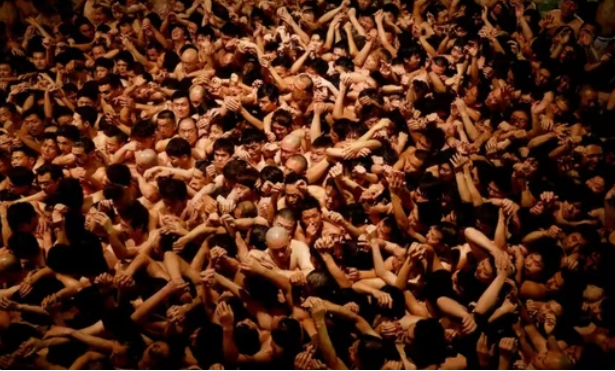What is Japan’s 1000-year-old Sominsai festival?
The bizarre annual ‘naked festival’ of Japan called ‘Sominsai’ has been impacted, as rural towns hosting it grapple with demographic challenges posed by the country’s rapid population ageing. Held every February, the cold weather festival involves scores of men wearing just loincloths ostensibly to invoke gods for a bountiful harvest.
The Waning Tradition
During the 1000-year-old Sominsai festival groups of barely clad local men roaming the streets in freezing temperatures, eating, drinking and chanting while onlookers shower them with freezing cold water. But participant numbers have drastically dropped with small town youth migrating to cities.
Ritual Significance
Rooted in pre-Buddhist era Shinto beliefs, the ritual is regarded as a commemoration signalling the end of winter. The concept of overcoming self-consciousness and braving extreme cold builds community bonds.
Kokuseki Temple’s Sominsai festival used to take place from the seventh day of Lunar New Year through to the following morning. The participants make chants of “jasso, joyasa” (meaning “evil, be gone”). For farmers, it marks preparations for new planting season beckoning spring.
Local Legends Behind Practice
Folklore suggests naked marches warded off plague epidemics in ancient times. Some accounts attribute origins to drunken samurai who ran amok creating the embarrassing spectacle subsequently ritualized into Sominsai.
Impact of Declining Rural Populace
But Japan’s intensifying demographic crisis with over 65s now comprising 30% of population has depleted rural towns. This hampers continuity of unique local customs by younger inhabitants which remain at the cultural core.
Some festivals have adjusted their rules in line with changing demographics and social norms so that they can continue to exist. It includes letting women take part in previously male-only ceremonies.
Loss of Heritage Concerns
As eccentric events like Sominsai vanish, fears around erosion of heritage from communities losing their vitality have emerged. However, pragmatic priorities of remaining youth override participation.
From next year, Kokuseki Temple will replace the festival with prayer ceremonies and other ways to continue its spiritual practices.
Japan’s population ageing
Japan is facing a serious demographic crisis as its population is ageing rapidly while birth rates decline. Latest data reveals nearly 30% of Japan’s population is now over 65 years, highest proportion globally.
With youth migrating to cities for jobs, small towns and rural areas are worst hit by manpower shortage. This has forced shutdown of businesses and challenged continuity of age-old Japanese heritage traditions and festivals thriving for centuries but now short of participants.
Category: International / World Current Affairs







